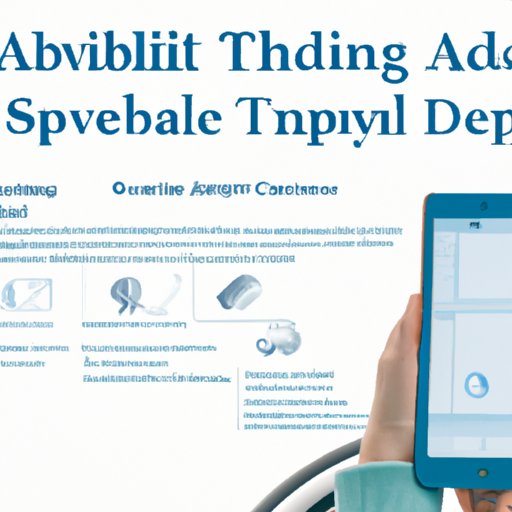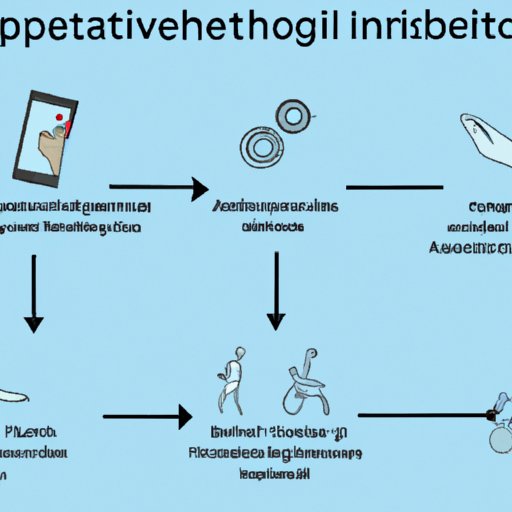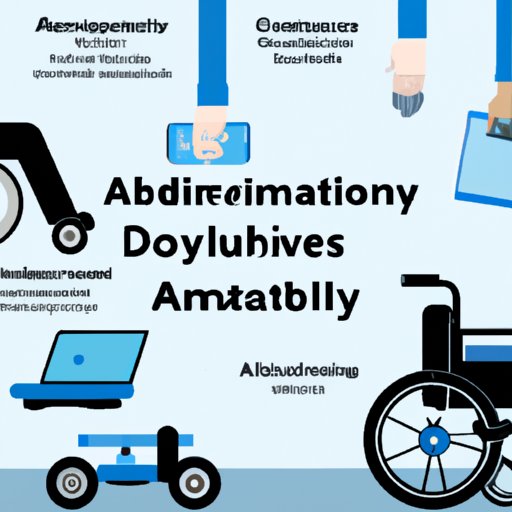Introduction
Adaptive technology is a type of technology designed to assist people with disabilities in performing tasks that they may otherwise find difficult. It can range from simple tools such as magnifying glasses to complex computer systems and software designed to make life easier for those with physical and mental limitations. The use of adaptive technology has become increasingly common in recent years, as it has been found to provide a wide range of benefits to those with disabilities.
Explaining Adaptive Technology: What It Is and How It Can Help
Adaptive technology is any device, system, or software that is specifically designed to help people with disabilities perform tasks that they may otherwise find difficult. This includes anything from special keyboards and voice recognition software to mobility aids and communication devices. The goal of adaptive technology is to provide an individual with the means to complete everyday tasks and activities with greater ease and independence.
There are many different types of adaptive technology available, each designed to meet the specific needs of a particular disability. For example, some adaptive technologies are designed to help individuals with visual impairments, while others are designed to help those with physical disabilities. Additionally, there are many different types of assistive devices available, such as wheelchairs, hearing aids, and prosthetic limbs.
For instance, a person with a physical disability may use a wheelchair to increase their mobility, or a person with a visual impairment may use a computer with special software that reads aloud what is on the screen. Similarly, those with hearing impairments may use hearing aids or other communication devices to help them communicate more effectively. There are also many types of adaptive technology designed to help those with cognitive disabilities, such as memory aids and speech-generating devices.
Adaptive technology can provide a variety of benefits to those with disabilities. These benefits include increased independence, improved quality of life, enhanced educational opportunities, and increased access to employment and leisure activities.

A Comprehensive Guide to Adaptive Technology for People with Disabilities
When it comes to adaptive technology, there are a variety of options available. Below is a comprehensive guide to the most commonly used forms of adaptive technology for people with disabilities.
Accessibility Features in Computers
Computers are one of the most widely used forms of adaptive technology. There are a number of accessibility features available on computers that can help people with disabilities use them more easily. These features include text-to-speech capabilities, enlarged text, and the ability to customize the keyboard and mouse settings. Additionally, computers can be equipped with specialized software that can help those with visual impairments, such as screen readers and magnifiers.
Assistive Devices for Mobility
For those with physical disabilities, there are a variety of assistive devices available that can help them move around more easily. These devices include wheelchairs, walkers, and canes. Additionally, there are a variety of powered mobility devices available, such as electric scooters and power wheelchairs.
Audio/Visual Solutions
People with hearing impairments can benefit from a variety of audio/visual solutions, such as hearing aids, telecoils, and cochlear implants. Additionally, there are a number of visual aids available for those with visual impairments, such as magnifiers and closed-captioned television.
Communication Solutions
Those with communication disabilities can benefit from a variety of communication solutions, such as speech-generating devices, sign language interpreters, and alternative keyboards. Additionally, there are a variety of communication apps available for mobile devices that can help individuals communicate more effectively.
Adaptive Technology – A Beginner’s Guide
Adaptive technology can be a great way to help those with disabilities live more independent lives. However, it can be intimidating for those who are just getting started. Here are some tips for finding the right adaptive technology and getting the most out of it.
Finding the Right Adaptive Technology
The first step in finding the right adaptive technology is to identify the specific needs of the individual. Once these needs are identified, it is important to do research to find the best solutions available. Additionally, it is important to consult with professionals who specialize in adaptive technology to ensure the best possible outcome.
Training and Support for Adaptive Technology
Once the right adaptive technology has been chosen, it is important to receive proper training and support in order to get the most benefit from it. Many companies offer training and support services for adaptive technology, and it is important to take advantage of these resources in order to maximize the potential of the technology.
Costs Associated with Adaptive Technology
It is important to consider the costs associated with adaptive technology when making a decision. While some adaptive technologies are relatively inexpensive, others can be very expensive. Additionally, there may be additional costs associated with training and support services, so it is important to factor these costs into the overall budget.

Adaptive Technology and the Benefits it Brings to Society
Adaptive technology is not only beneficial for those with disabilities, but it can also bring a number of positive benefits to society as a whole. These benefits include improved quality of life, enhanced educational opportunities, increased independence, and greater access to employment and leisure activities.
One of the most significant benefits of adaptive technology is the improved quality of life it can bring to those with disabilities. By providing individuals with the means to perform everyday tasks more easily, they can enjoy greater independence and a better quality of life.
Adaptive technology can also provide enhanced educational opportunities for those with disabilities. By providing access to learning materials and tools tailored to their specific needs, individuals can better participate in the educational process and have greater success in school.
“Adaptive technology has the potential to transform lives,” says Dr. John Williams, Director of the Center for Accessible Technology. “By providing individuals with disabilities with the tools they need to achieve their goals, it can open up a world of possibilities.”
Finally, adaptive technology can also help increase independence for those with disabilities. By providing individuals with the means to perform everyday tasks without assistance, it can help them lead more fulfilling and independent lives.

The Future of Adaptive Technology and Its Impact on Our Lives
As technology continues to evolve, so too does adaptive technology. As new technologies become available, it will become increasingly easier for those with disabilities to access the tools and resources they need to live more independent lives. Additionally, as technology advances, the cost of adaptive technology is likely to decrease, making it more accessible to those who need it.
Furthermore, as attitudes toward disabilities continue to change, the availability of adaptive technology is likely to increase. With more awareness and acceptance of disabilities, more resources will be devoted to developing and improving adaptive technology.
Adaptive Technology in the Workplace – How It Enhances Efficiency
Adaptive technology can also be used in the workplace to enhance efficiency. By providing employees with disabilities with the tools they need to perform their job duties, employers can increase productivity and reduce costs. Additionally, adaptive technology can help create a more inclusive and accessible workplace, allowing employees with disabilities to better participate in the work environment.
Conclusion
In conclusion, adaptive technology is a powerful tool that can be used to improve the lives of those with disabilities. It can provide individuals with increased independence, improved quality of life, enhanced educational opportunities, and greater access to employment and leisure activities. Additionally, it can be used in the workplace to enhance efficiency and create a more inclusive environment. As technology continues to evolve, the potential of adaptive technology will only continue to grow.
(Note: Is this article not meeting your expectations? Do you have knowledge or insights to share? Unlock new opportunities and expand your reach by joining our authors team. Click Registration to join us and share your expertise with our readers.)
